

The FlightBridgeED Podcast
Long Pause Media | FlightBridgeED
The FlightBridgeED Podcast provides convenient, easy-to-understand critical care medical education and current topics related to the air medical industry. Each topic builds on another and weaves together a solid foundation of emergency, critical care, and prehospital medicine.
Episodes
Mentioned books
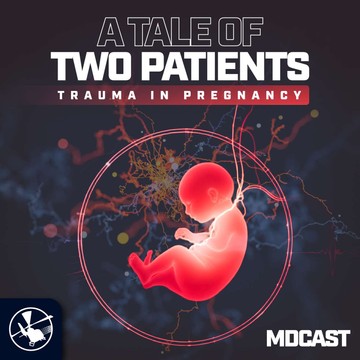
Dec 20, 2025 • 50min
MDCast: A Tale of Two Patients - Trauma in Pregnancy
In this episode of FlightBridgeED, Dr. Mike Lauria is joined by maternal-fetal medicine specialists Dr. Alex Pfeiffer and Dr. Liz Gartner for a practical, transport-focused deep dive into trauma in pregnancy. With maternal morbidity and mortality rising in the U.S. and more obstetric patients requiring transfer from smaller facilities, the team breaks down what changes when you’re managing trauma with two patients sharing one circulation—and how pregnancy can mask shock until both mom and fetus suddenly decompensate.They walk through the pregnancy-specific physiology that matters most in the field: increased blood volume and cardiac output, decreased SVR, and why hypotension is a late sign. You’ll hear why “normal blood pressure doesn’t equal normal perfusion,” how to recognize early compensated shock (including subtle mental-status changes and agitation), and the key resuscitation tweaks that make a major difference—especially oxygenation and ventilation targets that are tighter than what you might accept in non-pregnant trauma patients.The conversation also covers the highest-yield operational pieces for EMS and critical care transport crews: aortocaval compression after ~20 weeks and how to relieve it with left tilt/uterine displacement (even on a backboard), what to do about chest trauma (tube placement one to two interspaces higher), why placental abruption is a clinical diagnosis (and often not seen on imaging), fetal heart tones as a “vital sign,” and how viability changes transport destination decisions. They also address Rh considerations, RhoGAM timing, intimate partner violence screening opportunities during transport, and what crews should understand about perimortem C-section even if it’s not in their scope.Key takeawaysMom first = baby best: Maternal stabilization is fetal resuscitation. Prioritize ABCDs before fetus.After 20 weeks: relieve aortocaval compression with 15–30° left tilt, hip bump, or manual uterine displacement—don’t skip this during resuscitation/transport.Shock can hide: Pregnant patients may lose ~30–40% blood volume before hypotension—watch trends and early signs like tachycardia and altered/anxious behavior.Oxygen/ventilation goals are tighter: Aim SpO₂ ≥ 95%; pregnancy has a lower baseline CO₂—an EtCO₂ around 40 may represent hypoventilation in pregnancy.Placental abruption is clinical: Uterine tenderness + contractions + vaginal bleeding = high suspicion, even with “normal” ultrasound/CT.Chest tubes go higher: Due to diaphragmatic elevation, place chest tubes 1–2 intercostal spaces higher than usual.Think destination + monitoring: Viability (~23–24 weeks) drives need for OB capability and fetal monitoring; minimum observation discussed as ~4 hours post-trauma for viable gestations.Rh matters, but perfusion matters more: Use O-negative if available for known Rh-negative patients; don’t withhold lifesaving blood when it’s the only option.Transport is a screening opportunity: Consider intimate partner violence and create safe moments to ask when separated from partners.References – · American Academy of Family Physicians. Trauma in Pregnancy: Assessment, Management, and Prevention. Am Fam Physician. 2014;90(10):717–722.· Appelbaum RD, Yorkgitis B, Rosen J, Butts CA, To J, Knight AW, Zhang J, Kirsch JM, Levin JH, Riera KM, Kelley KM, Carter KT, Sawhney JS, Mukherjee K, Metz TD, Fiorentino MN, Cantrell S, Sapp A, Potgieter CJ, Kasotakis G, Como JJ, Freeman J. Trauma in pregnancy: A systematic review, meta-analysis, and practice management guideline from the Eastern Association for the Surgery of Trauma. J Trauma Acute Care Surg. 2025 Aug 1;99(2):298-309.· SOGC Clinical Practice Guideline. Guidelines for the Management of a Pregnant Trauma Patient. J Obstet Gynaecol Can. 2015;37(6):553–571.· Muench MV et al. Physiologic changes of pregnancy relevant to trauma management. Clin Obstet Gynecol. 2007;50(3):601–610.· Larson, Nicholas J. et al.Prehospital Management of the Pregnant Trauma Patient. Air Medical Journal, Volume 44, Issue 4, 236 - 241· Mendez-Figueroa, Hector et al. Trauma in pregnancy: an updated systematic review. American Journal of Obstetrics & Gynecology, Volume 209, Issue 1, 1 - 10· Jain V et al. Trauma in pregnancy. Clin Obstet Gynecol. 2015;58(3):613–624.· Clark SL et al. Amniotic Fluid Embolism: Diagnosis and Management Update. Am J Obstet Gynecol. 2016;215(2):B16–B24.· Lipman S, Cohen S, Einav S, Jeejeebhoy F, Mhyre JM, Morrison LJ, Katz V, Tsen LC, Daniels K, Halamek LP, Suresh MS, Arafeh J, Gauthier D, Carvalho JC, Druzin M, Carvalho B, Society for Obstetric Anesthesia and Perinatology The Society for Obstetric Anesthesia and Perinatology consensus statement on the management of cardiac arrest in pregnancy. Anesth Analg. 2014 May;118(5):1003-16. · Strong TH, Lowe RA. Perimortem cesarean section. Am J Emerg Med. 1989 Sep;7(5):489-94.· Liggett MR, Amro A, Son M, Schwulst S. Management of the Pregnant Trauma Patient: A Systematic Literature Review. J Surg Res. 2023 May;285:187-196.· Greco PS, Day LJ, Pearlman MD. Guidance for Evaluation and Management of Blunt Abdominal Trauma in Pregnancy. Obstet Gynecol. 2019 Dec;134(6):1343-1357.· April MD, Long B. Trauma in pregnancy: A narrative review of the current literature. Am J Emerg Med. 2024 Jul;81:53-61.
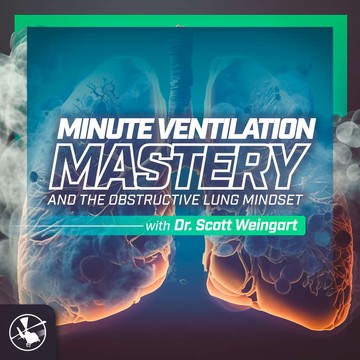
Aug 5, 2025 • 44min
Minute Ventilation Mastery & The Obstructive Lung Mindset – with Scott Weingart
Scott Weingart, a critical care and emergency medicine expert, joins the conversation to share his insights on mechanical ventilation and managing obstructive lung diseases. He challenges traditional tidal volume formulas, advocating for 8–10 mL/kg in acidosis cases. Scott breaks down the importance of context when determining minute ventilation and the role of inspiratory flow and sedation in obstructive patients. He also highlights when to avoid intubating DKA patients and clarifies misconceptions about PEEP, stressing that not all strategies are universally applicable.
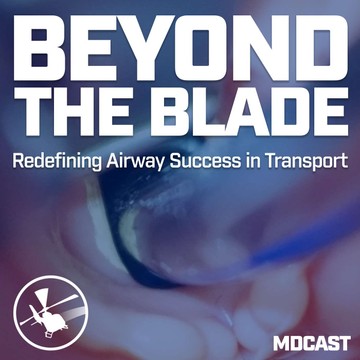
Jul 30, 2025 • 42min
MDCAST: Beyond the Blade - Redefining Airway Success in Transport
In this discussion, Nick George, a retrievalist from Australia and former medical student at the University of Maryland, dives into the evolving world of airway management in critical care transport. He challenges long-held beliefs about whether a paramedic or nurse background truly impacts intubation success. Featuring insights from a massive study of over 7,800 intubations, Nick emphasizes the importance of training and repetition over credentials. He also reflects on historical influences in EMS and explores the dynamics of pre-hospital airway management for today's providers.
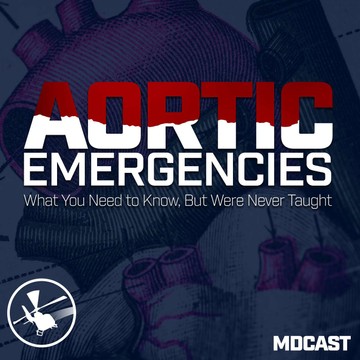
Jul 21, 2025 • 47min
MDCAST: Aortic Emergencies - What You Need to Know, But Were Never Taught
In this episode of the FlightBridgeED Podcast, Dr. Mike Lauria is joined by Dr. Nick George, a retrieval and EMS physician currently practicing full-time in Darwin, Australia. Together, they break down the often-overwhelming topic of aortic emergencies in a way that’s brilliantly simple, practical, and immediately applicable for all providers—whether you’re in the ICU, on the flight line, or working your way up in emergency medicine.Dr. George introduces a clean mental model—1 tube, 2 major problems, 3 causes—to guide listeners through the classification, diagnosis, and critical transport considerations for aortic dissections and aneurysms. From understanding penetrating ulcers to navigating hypertensive vs hypotensive presentations, this episode dives deep without drowning you in jargon.We also explore the science behind anti-impulse therapy, challenge long-held dogmas about esmolol vs nicardipine, and reveal eye-opening findings from a two-decade analysis of over 1,000 aortic emergency transports. Whether you’re flying patients to tertiary care, working in rural EDs, or prepping for boards, this episode will sharpen your edge.Available anywhere you listen to podcasts or at FlightBridgeED.com. While you’re there, explore our highly successful, award-winning courses trusted by critical care providers around the world.Key TakeawaysThe aorta can be simplified into “1 tube, 2 problems (tearing or weakening), caused by 3 forces: pressure, pulsatility, and geometry.”Distinguishing between dissection and aneurysm—and whether it’s hypertensive or hypotensive—can guide safe transport decisions, even if you're not making the diagnosis.Dissections may present without pain in up to 30% of cases, underscoring the importance of clinical vigilance and recognizing subtle signs.Classic signs (pulse deficits, BP differentials) are often unreliable. Don’t dismiss vague or mismatched symptoms.Ultrasound, although not definitive, can provide useful data en route—especially in cases of hypotension or ambiguity.Anti-impulse therapy isn't as evidence-backed as we've been taught. Recent studies show nicardipine may be just as effective—and possibly safer—than esmolol.Transport crews must be empowered to advocate for patients when findings don’t line up with the presumed diagnosis.

Jul 15, 2025 • 47min
Bleeding Out: The Trauma We Can Actually Fix
In this enlightening discussion, Dr. Mark Piehl, a pediatric ICU physician and trauma resuscitation expert, dives deep into the critical realm of trauma care. He shares compelling insights on early blood product administration, asserting that it significantly boosts survival rates in trauma cases. Mark emphasizes the effectiveness of both whole blood and component therapy, explaining that transport times are crucial, even in urban settings. With real-world examples and bold recommendations, he challenges conventional practices and advocates for innovative approaches to prehospital blood management.

Jul 8, 2025 • 1h
Summer, Bloody Summer
Get ready for a transformative episode of the FlightBridgeED Podcast, where host Eric Bauer teams up with EMS trailblazer Dr. Peter Antevy to dive into the life-saving world of pre-hospital hemorrhage control and blood product administration. Discover how whole blood is reshaping trauma care, doubling survival rates for patients bleeding out from trauma, OB emergencies, or medical crises. Dr. Antevy shares hard-won lessons from Palm Beach County, revealing the vital signs that trigger transfusions, the logistics of launching a blood program, and why resuscitating before intubating is a game-changer. From a child saved on I-95 to a police officer revived after a ricochet wound, these gripping stories bring the science to life. Plus, peek into the future with spray-dried plasma and TBI protocols that could redefine EMS. Whether you’re a seasoned critical care provider or just starting your journey, this episode will ignite your passion for saving lives.Listen anywhere you enjoy podcasts or at flightbridgeed.com, where you can also explore our award-winning courses to fuel your growth in critical care medicine.AS PROMISED, HERE IS DR. ANTEVY'S EMAIL ADDRESS IF YOU WANT TO REACH OUT: peter@handtevy.comKey TakeawaysWhole blood administration in pre-hospital trauma care achieves a ~90% 24-hour survival rate for non-arrest patients with massive hemorrhage, using criteria like systolic BP <70, heart rate ≥110, or end-tidal CO2 <25, emphasizing the need for precise patient selection and rapid intervention within 35 minutes of injury.Prioritizing resuscitation over intubation prevents peri-intubation cardiac arrest in hypotensive trauma patients, as shown by a tenfold reduction in intubation rates in New Orleans’ advanced resuscitative care bundle, highlighting the importance of restoring perfusion first.Plasma or packed red blood cells can be effective alternatives when whole blood isn’t available, but providers must manage citrate-induced hypocalcemia (e.g., with calcium chloride) and use tools like the LifeFlow infuser for rapid transfusion.Networking and advocacy are critical for EMS innovation: connecting with resources like San Antonio’s summits or the SPARC Academy can help overcome barriers to implementing blood programs, empowering providers to drive change in their communities.
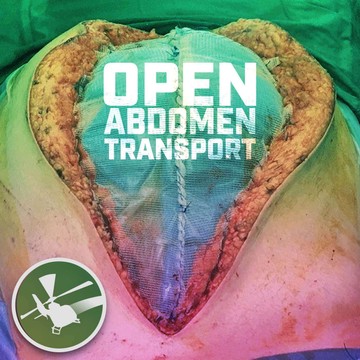
May 30, 2025 • 54min
MDCAST: Open Abdomen Transport
In this episode of the FlightBridgeED Podcast, Dr. Michael Lauria sits down with Dr. Bryce Taylor—flight physician, trauma educator, and surgical critical care expert—for a deep dive into one of the most visually shocking and physiologically demanding scenarios in transport medicine: the patient with an open abdomen.From trauma-based damage control laparotomies to the high-stakes management of abdominal compartment syndrome, this episode unpacks the pathophysiology, decision-making, and transport logistics for these fragile patients. Whether you're facing hemostatic chaos, rising pressures, or metabolic unraveling, you'll gain insight into recognizing, stabilizing, and safely transporting these complex cases.You'll learn not just how to manage the wound—but how to manage the why behind the wound.Get this episode wherever you listen to podcasts—or listen directly at flightbridgeed.com. While you're there, explore our award-winning, nationally recognized courses in critical care and emergency medicine. No pressure. Just professional growth.Key Takeaways:Surgical damage control isn’t about definitive repair—it's about temporizing a dying patient. Understanding what was done (packing, foams, drains) matters less than knowing why it was done.Open abdomens are dramatic but misleading. The real threat is usually hidden: bleeding, inflammatory storms, obstructive shock, or silently rising compartment pressures.A vacuum dressing isn't just a dressing—it’s part of the resuscitation strategy. Ensuring it's functioning correctly could mean the difference between success and multi-organ failure.Watch the urine output. Sudden drops are a red flag. It’s your non-invasive window into renal perfusion, evolving abdominal pressures, and even early septic deterioration.Fluid is a drug. Over-resuscitating these patients doesn’t just cause swelling—it can prevent surgical closure, increase infections, and result in months of additional recovery or death.

Apr 22, 2025 • 24min
VENTILATOR JIU-JITSU: The Obstructive Lung Puzzle
What if the biggest mistake you’re making with your COPD vent patients isn’t in what you’re doing—but in how fast you’re doing it?In this episode, Eric Bauer takes us deep into the nuances of ventilating a COPD patient in acute respiratory failure. Through a complex case breakdown, Eric challenges conventional thinking around rate, tidal volume, and ventilator pressures, offering critical insights into the obstructive approach.You’ll hear the step-by-step evolution of ventilator management from a real-world interfacility transfer of a hypercapnic, non-compliant COPD patient. Discover why high respiratory rates can be catastrophic, how static compliance and RCexp should influence your strategy, and what “minute ventilation” really means in obstructive physiology.This is more than a case review—it's a clinical recalibration.Key Takeaways:Ventilator strategy must match the pathophysiology—blindly applying high respiratory rates in COPD can worsen outcomes by truncating inspiratory time and impairing ventilation.Minute ventilation is king. Tidal volume and rate must be adjusted not for numbers but to optimize both inspiratory and expiratory phases—especially in patients with increased resistance.Understand the math behind I:E ratios. Your ventilator isn’t a magic box—if you don’t understand how to calculate cycle times, you’ll miss what’s happening with your patient.Static compliance is dynamic. Don’t trust low numbers blindly—evaluate whether your lung is being adequately filled before calling compliance “low.”Auto-PEEP and high-pressure alarms can silently sabotage your tidal volumes if you don't actively adjust them to meet the demands of inspiratory resistance.

Feb 4, 2025 • 48min
TRAPPED IN FLESH: Respiratory Failure in Obese Patients
Join Eric Bauer and Dr. Mike Lauria as they dissect two challenging critical care transport cases centered on managing respiratory failure in obese and morbidly obese patients. Get ready for a deep dive into advanced physiological concepts, practical tips for troubleshooting ventilator settings, and real-world lessons you can apply to patient care right away. From recognizing unique challenges in the obese population to fine-tuning pressures and understanding how to balance protective ventilation with the realities of chest wall resistance, this episode offers clear, expert-level insights delivered in an approachable way.Key TakeawaysAppreciating that obesity significantly reduces functional residual capacity, requiring thoughtful increases in ventilatory pressures.Using waveform analysis, plateau pressures, and driving pressures to differentiate between obstructive and restrictive components, especially when chronic illnesses overlap with acute processes.Strategic positioning such as ramping or partial proning can be employed to recruit lung volume and improve oxygenation.Recognizing that some patients will need alarm limits and inspiratory pressures far beyond standard protocols—especially when chest wall resistance is extremely high.Incorporating a systematic approach, including incremental changes and close monitoring, rather than relying on one-size-fits-all protocols.Leveraging collaborative practice and direct medical oversight to fine-tune treatment in the face of complex physiology.The FlightBridgeED Podcast has been your go-to resource for critical care, EMS, and emergency medicine education since 2012. Access this episode and the entire library wherever you get your podcasts or by visiting flightbridgeed.com. While you’re there, you can also explore our award-winning courses that have helped countless professionals master advanced practice concepts.We invite you to explore our full range of podcast shows, where our network of FlightBridgeED creators and contributors deliver dynamic discussions on everything from critical care to cutting-edge EMS topics. You’ll also find unique blogs, training resources, and opportunities to engage in our growing community. And don’t forget to check out our upcoming courses and see what’s happening at FAST this year.
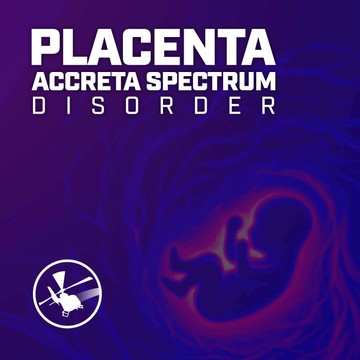
Dec 26, 2024 • 46min
MDCAST: Placenta Accreta Spectrum Disorder
In this episode of the FlightBridgeED Podcast, Dr. Michael Lauria and guest Dr. Alex Pfeiffer, a maternal-fetal medicine (MFM) fellow, delve into the critical and complex topic of Placenta Accreta Spectrum Disorder (PAS). With its rapidly evolving complications, this condition demands acute recognition, careful transport coordination, and multidisciplinary care. Together, they unpack the spectrum’s pathophysiology, risk factors, diagnostic strategies, and advanced management protocols essential for critical care and transport teams. Whether you’re a seasoned provider or new to pre-hospital medicine, this episode provides practical knowledge and actionable insights to elevate your clinical practice.Catch this episode and more wherever you listen to podcasts or on our website at flightbridgeed.com. While there, explore our award-winning courses and other free content in our Culture section to advance your career and expand your critical care expertise.TakeawaysAdvanced Insight: The importance of understanding PAS as a spectrum, including the implications of invasive placentation on maternal hemorrhage and the role of multidisciplinary teams in patient outcomes.Practical Application: Early recognition of PAS through clinical and diagnostic signs, such as Doppler flow abnormalities, hypervascularity, and placental lakes, to facilitate timely and appropriate interventions.Foundational Knowledge: Awareness of risk factors like prior cesarean sections, placenta previa, and uterine surgeries that increase the likelihood of PAS and necessitate careful monitoring.References1. Dunbar N, Cooke M, Diab M, Toy P. Transfusion-related acute lung injury after transfusion of maternal blood: a case-control study. Spine (Phila Pa 1976). Nov 1 2010;35(23):E1322-7. doi:10.1097/BRS.0b013e3181e3dad22. Eller AG, Bennett MA, Sharshiner M, et al. Maternal morbidity in cases of placenta accreta managed by a multidisciplinary care team compared with standard obstetric care. Obstet Gynecol. Feb 2011;117(2 Pt 1):331-337. doi:10.1097/AOG.0b013e3182051db23. Eller AG, Porter TF, Soisson P, Silver RM. Optimal management strategies for placenta accreta. Bjog. Apr 2009;116(5):648-54. doi:10.1111/j.1471-0528.2008.02037.x4. Jauniaux E, Bunce C, Grønbeck L, Langhoff-Roos J. Prevalence and main outcomes of placenta accreta spectrum: a systematic review and meta-analysis. Am J Obstet Gynecol. Sep 2019;221(3):208-218. doi:10.1016/j.ajog.2019.01.2335. Murphy EL, Kwaan N, Looney MR, et al. Risk factors and outcomes in transfusion-associated circulatory overload. Am J Med. Apr 2013;126(4):357.e29-38. doi:10.1016/j.amjmed.2012.08.0196. Pachtman S, Koenig S, Meirowitz N. Detecting Pulmonary Edema in Obstetric Patients Through Point-of-Care Lung Ultrasonography. Obstet Gynecol. Mar 2017;129(3):525-529. doi:10.1097/aog.00000000000019097. Padilla CR, Shamshirsaz A. Critical care in obstetrics. Best Pract Res Clin Anaesthesiol. May 2022;36(1):209-225. doi:10.1016/j.bpa.2022.02.0018. Padilla CR, Shamshirsaz AA, Easter SR, et al. Critical Care in Placenta Accreta Spectrum Disorders-A Call to Action. Am J Perinatol. Jul 2023;40(9):988-995. doi:10.1055/s-0043-17616389. Panigrahi AK, Yeaton-Massey A, Bakhtary S, et al. A Standardized Approach for Transfusion Medicine Support in Patients With Morbidly Adherent Placenta. Anesth Analg. Aug 2017;125(2):603-608. doi:10.1213/ane.000000000000205010. Pegu B, Thiagaraju C, Nayak D, Subbaiah M. Placenta accreta spectrum-a catastrophic situation in obstetrics. Obstet Gynecol Sci. May 2021;64(3):239-247. doi:10.5468/ogs.2034511. Roubinian N. TACO and TRALI: biology, risk factors, and prevention strategies. Hematology Am Soc Hematol Educ Program. Nov 30 2018;2018(1):585-594. doi:10.1182/asheducation-2018.1.58512. Sawada M, Matsuzaki S, Mimura K, Kumasawa K, Endo M, Kimura T. Successful conservative management of placenta percreta: Investigation by serial magnetic resonance imaging of the clinical course and a literature review. J Obstet Gynaecol Res. Dec 2016;42(12):1858-1863. doi:10.1111/jog.1312113. Sentilhes L, Kayem G, Chandraharan E, Palacios-Jaraquemada J, Jauniaux E. FIGO consensus guidelines on placenta accreta spectrum disorders: Conservative management. Int J Gynaecol Obstet. Mar 2018;140(3):291-298. doi:10.1002/ijgo.1241014. Shamshirsaz AA, Fox KA, Erfani H, et al. Coagulopathy in surgical management of placenta accreta spectrum. Eur J Obstet Gynecol Reprod Biol. Jun 2019;237:126-130. doi:10.1016/j.ejogrb.2019.04.02615. Silver RM, Barbour KD. Placenta accreta spectrum: accreta, increta, and percreta. Obstet Gynecol Clin North Am. Jun 2015;42(2):381-402. doi:10.1016/j.ogc.2015.01.01416. Simonazzi G, Bisulli M, Saccone G, Moro E, Marshall A, Berghella V. Tranexamic acid for preventing postpartum blood loss after cesarean delivery: a systematic review and meta-analysis of randomized controlled trials. Acta Obstet Gynecol Scand. Jan 2016;95(1):28-37. doi:10.1111/aogs.1279817. Tadayon M, Javadifar N, Dastoorpoor M, Shahbazian N. Frequency, Risk Factors, and Pregnancy Outcomes in Cases with Placenta Accreta Spectrum Disorder: A Case-Control Study. J Reprod Infertil. Oct-Dec 2022;23(4):279-287. doi:10.18502/jri.v23i4.1081418. Tinari S, Buca D, Cali G, et al. Risk factors, histopathology and diagnostic accuracy in posterior placenta accreta spectrum disorders: systematic review and meta-analysis. Ultrasound Obstet Gynecol. Jun 2021;57(6):903-909. doi:10.1002/uog.2218319. Toy P, Gajic O, Bacchetti P, et al. Transfusion-related acute lung injury: incidence and risk factors. Blood. Feb 16 2012;119(7):1757-67. doi:10.1182/blood-2011-08-37093220. Toy P, Popovsky MA, Abraham E, et al. Transfusion-related acute lung injury: definition and review. Crit Care Med. Apr 2005;33(4):721-6. doi:10.1097/01.ccm.0000159849.94750.5121. Warshak CR, Ramos GA, Eskander R, et al. Effect of predelivery diagnosis in 99 consecutive cases of placenta accreta. Obstet Gynecol. Jan 2010;115(1):65-69. doi:10.1097/AOG.0b013e3181c4f12a


